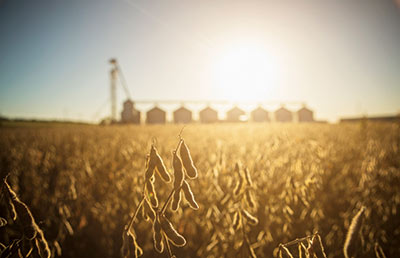What About Cooperative Transition Rule

Farmers who sell grain or other farm commodities to a cooperative with a fiscal year ending sometime in 2018 are required to do an extra calculation in arriving at their 2018 QBI deduction. This extra step is only for 2018. Starting in 2019, the farmer will calculate the QBI deduction based on all farm income and then only reduce it for the lesser of (1) 9% of QBI related to cooperative “operations” or (2) 50% of wages relate to cooperative operations.
We have been informed by reliable sources that the only IRS guidance we will receive on this is in instructions to Form 8903 – Domestic Productions Activity Deduction. This guidance is quoted as follows:
“Note. The repeal of section 199 for tax years beginning after December 31, 2017, does not apply to a qualified payment received by a patron from a specified agricultural or horticultural cooperative in a tax year beginning after December 31, 2017, to the extent such qualified payment is attributable to qualified production activities income with respect to which a deduction is allowable to the cooperative under former section 199 for a tax year of the cooperative beginning before January 1, 2018. Such qualified payment remains subject to former section 199 and any section 199 deduction allocated by the cooperative to its patrons related to such qualified payment may be deducted by such patrons in accordance with former section 199. In addition, no deduction is allowed under section 199A for such qualified payments.”
Therefore, based on this guidance, we need to allocate the 2018 farmer’s income similar to how we allocated it under the old Section 199 rules. For ease of simplicity, farmers in 2018 need to allocate their income to three buckets. The first bucket is for payments received by the farmer from the cooperative before the fiscal year-end of the cooperative. (You need to know the fiscal year-end of the cooperative.) The second bucket is payments from the cooperative after its year-end. Finally, the last bucket is all other payments.
Net income from all farm operations including Section 1245 gains from equipment trades, etc. should be calculated. One method of allocating net income is by the percentage of gross receipts for each of the three buckets.
The portion of net income before the cooperative fiscal year-end of net farm income does not qualify for any QBI deduction. The farmer’s deduction for this bucket is the DPAD from the cooperative. For most farmers, they actually received most of this DPAD in 2017 and may receive a tiny amount in 2018. Almost all DPAD from cooperatives received in 2018 is the old Section 199 DPAD and is deducted above the line.
The remaining amount of net farm income (the second and third buckets) is used to calculate the QBI deduction. From that number, the farmer then needs to reduce the deduction by the lesser of 9% of cooperative QBI (the amount from the second bucket calculation) or 50% of wages (again from the calculation in the second bucket). That is your final Section 199A deduction for 2018 (plus any Section 199A DPAD from a cooperative which is likely zero).
Now, we know this sounds complicated, but actually it is not that hard to do. It just involves some extra math steps. Here is an example to show how to do it:
Sue, has $100,000 of net farm income. Her bucket #1 receipts were $200,000, bucket #2 receipts were $300,000 and bucket #3 receipts were $500,000. Therefore, 20% of her farm income does not qualify for QBI. The remaining $80,000 qualifies for a tentative QBI deduction of $16,000. Total wages were $50,000, therefore, wages allocated to bucket #2 is $15,000. 50% of this number if $7,500. 9% of bucket #2 QBI is $30,000 times 9% or $2,700. This number is lower than 50% of wages, so we need to reduce the QBI deduction to $13,300. This is Sue’s final Section 199A QBI deduction since she did not get any additional 199A DPAD from her cooperative.
Allocation by gross receipts is merely one way of determining the net income of each bucket. Other allocation methods may be reasonable and appropriate.
The hardest part of doing these calculations is that appropriate footnotes need to be included with any partnership or S corporation tax return that contains these three buckets of income. That footnote can easily be 30-50 lines long. Since many farmer’s tax returns are due March 1 and we have received our “guidance”, there is no expectation that farmers who normally file by March 1 will get any extension on this filing date.
Paul Neiffer is a certified public accountant and business advisor specializing in income taxation, accounting services, and succession planning for farmers and agribusiness processors. Paul is a principal with CliftonLarsonAllen in Walla Walla, Washington, as well as a regular speaker at national conferences and contributor at agweb.com. Raised on a farm in central Washington, he has been immersed in the ag industry his entire life, including the last 30 years professionally. Paul and his wife purchase an 180 acre ranch in 2016 and enjoy keeping it full of animals.

My cooperative sent a letter to my corporation listing the fiscal year ended August 31,2018 DPAD amount. The 1099 listed the same amount. Can a CORP deduct the amount from 2018 taxes ?